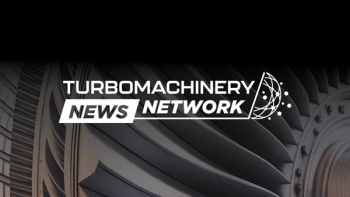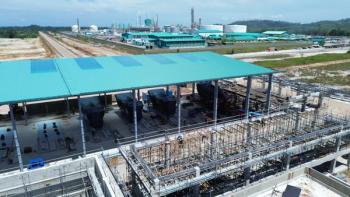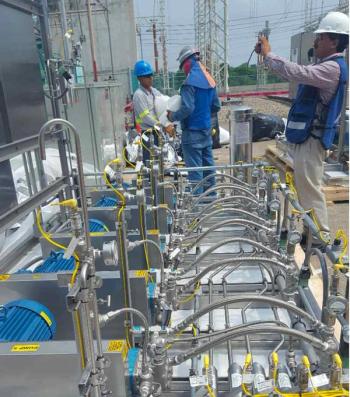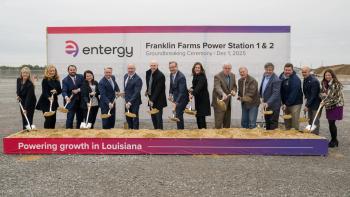Mitsubishi Heavy Industries (MHI) has signed a Memorandum of Understanding with the Ministry of Energy of Uzbekistan (MOE) to conduct a joint study on a power development plan to stabilize the country’s power sources and possibly upgrade its gas turbine fleet to be hydrogen-capable and other decarbonization efforts.
Key Takeaways
- Mitsubishi Heavy Industries and Uzbekistan's Ministry of Energy are collaborating on a two-year joint study to stabilize Uzbekistan's power grid and explore decarbonization strategies, including hydrogen-capable gas turbines.
- The partnership aims to upgrade existing power plants, evaluate new gas turbine combined-cycle plants with hydrogen co-firing capabilities, and integrate these efforts with Uzbekistan's goal of over 54% renewable energy by 2030.
- MHI will leverage its expertise in thermal power generation, hydrogen co-firing, and carbon capture technologies to help Uzbekistan enhance renewable energy integration and achieve further decarbonization.
The program will continue for two years with financial support from the Ministry of Economy, Trade and Industry of Japan.
Both parties have been working on:
- evaluating an upgrade for existing power plants leveraging MHI equipment;
- evaluating new gas turbine combined-cycle plants, including hydrogen co-firing and scope of necessary modifications; and
- capacity planning with the latest technologies.
Uzbekistan's government recently published its plan for introducing renewable energy by 2030, with the goal of reaching a renewable generation ratio of over 54%. MHI has supplied systems for thermal power generation installations in Uzbekistan that support stable power production in addition to its decarbonization technologies, including:
- hydrogen co-firing
- carbon capture, utilization, and storage (CCUS)
MOE and MHI will assess the current plan and identify necessary countermeasures, such as implementing new systems and modifying the existing gas turbine fleet to enhance the introduction of renewables and promote further decarbonization.
MHI’s CO2-capture pilot plant recently went online at Kansai Electric Power’s (KEPCO) Himeji no. 2 power station in Hyogo Prefecture, Japan. Using MHI’s Kansai Mitsubishi Carbon Dioxide Recovery process (KM CDR), the pilot will extract CO2 from Himeji’s gas turbine-produced flue stream, allowing MHI to conduct additional research and development for carbon-capture technologies.
KEPCO’s power plant currently captures approximately 5 tons of CO2 per day, with the next-generation pilot project expected to increase the CO2-capture rate following demonstration. MHI also installed its ΣSynX Supervision remote monitoring system to monitor and collect pilot data. With the pilot, MHI looks to:
- Strengthen its carbon capture, utilization, and storage business
- Accelerate R&D for minimizing environmental footprint and lowering costs
- Enable additional demonstration tests with new equipment
- Adhere to MISSION NET ZERO—an initiative to decarbonize both energy supply and demand by 2040
MHI’s Environmental & Chemical Engineering department also recently refurbished several facilities at its Eco Clean Plaza Miyazaki: a waste-to-energy plant in Kyushu, Japan. The refurbishment work focused on ensuring stable combustion and long-term operation, upgrading out-of-date equipment that ran for over 15 years. MHIEC’s combustion control system extended plant service life and achieved stable combustion with lower air ratios.
The company also replaced equipment involved in:
- Combustion
- Combustion-gas cooling
- Waste gas treatment
- Waste heat utilization
- Ventilation
- Ash removal
- Electrical instrumentation
Following refurbishment, the plant attained a 31.86% CO2 reduction rate compared to the lower 17.25% targeted rate. This was achieved by replacing a feeder and boiler piping, allowing higher durability when exposed to lower air ratios. Additionally, the increased power generation made efficient use of waste steam through a low-temperature denitration catalyst. Lastly, MHIEC installed high-efficiency motors, converted to inverter-type equipment, and optimized the remaining plant equipment.






